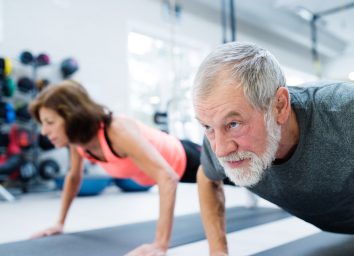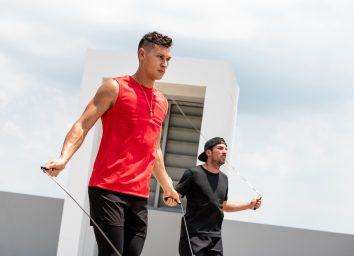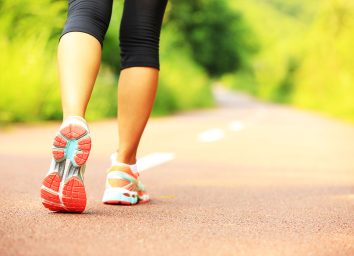Secret Tricks for Keeping in Shape After 60, Say Experts
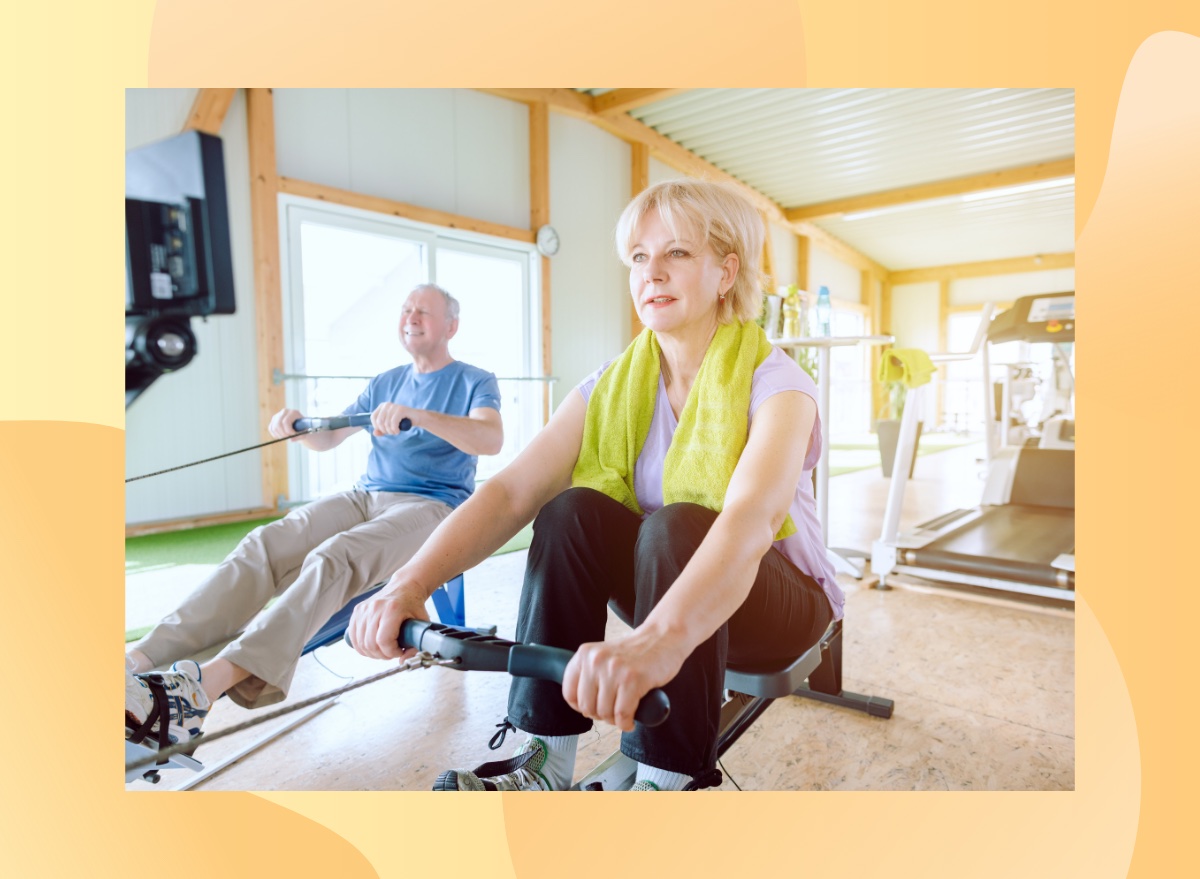
If we had to “brand” an overly simplified, get-in-shape exercise philosophy for people over 60, chances are we’d go with something like “The WWY Life.”
For the record, “WWY” would be shorthand for “weights, walking, and yoga.” Why should older folks prioritize those forms of fitness? Well, while it’s great to partake in cardio exercise at any age—and any exercise is good exercise—as you get older, your fitness goals would be better redirected at achieving strength and better balance and flexibility.
“Weights build and maintain lean muscle mass for strong bones and better metabolism, while yoga and walking reduce stress and cortisol levels” while also keeping your fat burn high and helping your balance and flexibility, says Paula Thomas, a NASM-certified personal trainer at Les Mills. “Too much cardio stresses our bodies and can take our appetites out of control.”
While that seems straightforward enough—lift weights, walk a lot, do yoga—we all know that, when it comes to fitness, it’s always easier said than done.
Sometimes you’re just not feeling it. Sometimes you’ve got a busy schedule that doesn’t allow exercise. Sometimes you’re down on yourself, and the gym can feel far too intimidating. We’re all human, and it’s why you need to be kind to yourself whenever you feel as though you’re falling short of your goals.
In any event, if you’re looking to get in great shape in your over-60 years, chances are you could use a little bit of help. With that in mind, we reached out to scores of trainers and doctors for their tips for keeping motivation high and getting the most out of your quest to stay fit. Read on for their answers. And for some exercises to avoid, don’t miss this list of The Worst Exercises You Can Do After 60.
Hack Your Personal Reward System

Health and nutrition expert Traci D. Mitchell, MA, MS, says the key to getting and staying in shape is to understand your personal reward system. “I ask my clients how they plan to reward themselves after a week of eating great, or after a hard workout, or even after losing 10 pounds. What’s the plan?,” she says. “People generally don’t have a problem following a healthy meal plan, or doing a week of workouts to shape up. But not everyone gives thought to the behaviors or patterns they fall back into after they’re successful for a week.”
Say you’ve lost a few pounds. Mitchell asks, “Do you say, ‘I’ve worked I’ve worked so hard, I deserve a big dinner and drinks tonight?!’ Or do you say, ‘I’ve worked so hard, I deserve a better pair of running shoes to keep the momentum going?!’”
If you’re the latter, your chances of being in shape are far higher. “When you’re over 60, it’s challenging to burn the candle at both ends,” she says. “Giving into an unhealthy reward system is much harder to come back from than it is for someone 30 years younger.” And for more great exercise advice, don’t miss The Secret Mental Trick for Getting a Lean Body, Say Experts.
Practice Morning Gratitude
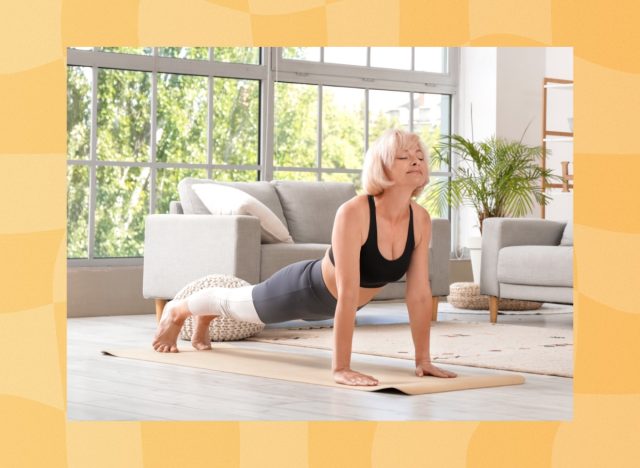
Michelle Davies, a certified life coach who works with many women in their 60s, advises you to start your days with “gratitude, prayers, or meditation.” “Taking 10 minutes of quiet reflection before starting your day can impact your mood significantly in the long run,” she says. “No matter your religion or spiritual beliefs, everyone can benefit from a few quiet moments where you get yourself in a positive mindset.”
There’s plenty of science that backs up the benefits of meditation, specifically. One new study published in the journal IOS Press discovered that 12 minutes of daily meditation led to “increased gray matter volume” in the brain, “upregulation of immune function,” “increased cerebral blood flow to significant brain areas,” and “increased synaptic function” in the brain. What’s more, it was linked to “less stress,” “better sleep,” “less inflammation,” “increased wellbeing,” “reversal of memory loss,” “enhanced executive function,” and “enhanced mood with less anxiety and depression.”
Cut Your To-Do List in Half
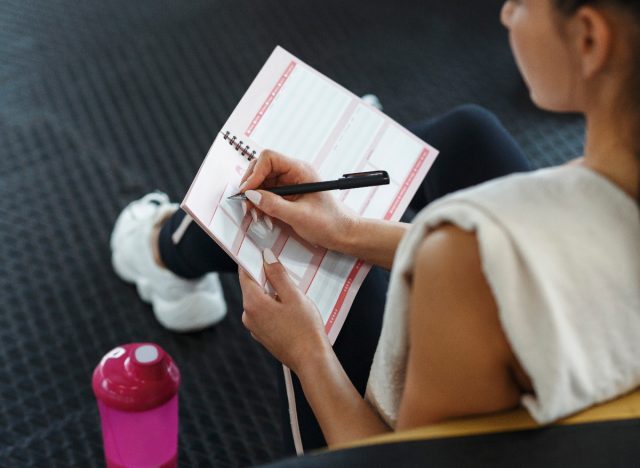
One thing Thomas does herself to stick to her fitness goals? “I take my daily ‘to do list’ and cut it in half,” she says. “Doing so keeps my workload from being overwhelming. When I find myself overwhelmed by laundry, dishes, and other things, I break it down into manageable bits. I tell myself I will just fold 10 items or wash 10 dishes or something similar. This gets me going and usually I am motivated more once I overcome the inertia. Sometimes setting a timer works for other tasks!”
Create a “Want” vs “Need” Mindset
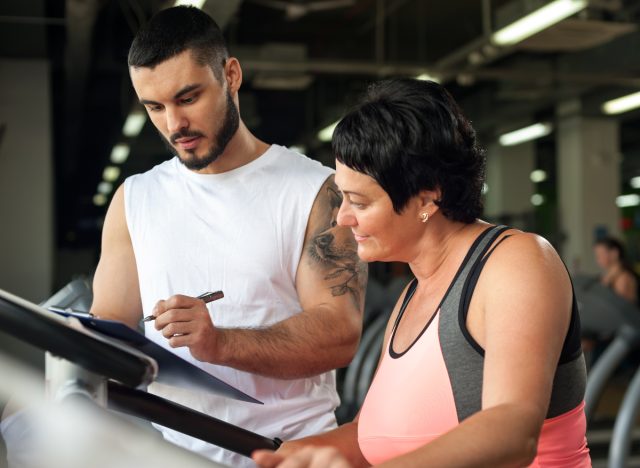
If you want to do something instead of needing to do it, chances are you’ll actually do it—and it all starts by creating an exercise regimen that isn’t overwhelming.
“By creating a daily regimen of consistent and feasible exercise routines that aren’t too hard, don’t hurt, and are designed to increase mobility, flexibility, and improve your overall outlook, you’ll start to shift from a mindset of having to exercise to wanting to exercise,” says Len Glassman, a master level fitness professional, author, and nutritionist. “You’ll look forward to experiencing these positive and personally rewarding physical and emotional attributes, to the point where you no longer think about it as a choice, but rather a necessary and important part of your day, like brushing your teeth and washing your hands.”
Recognize That You’re Either Getting Weaker or Stronger
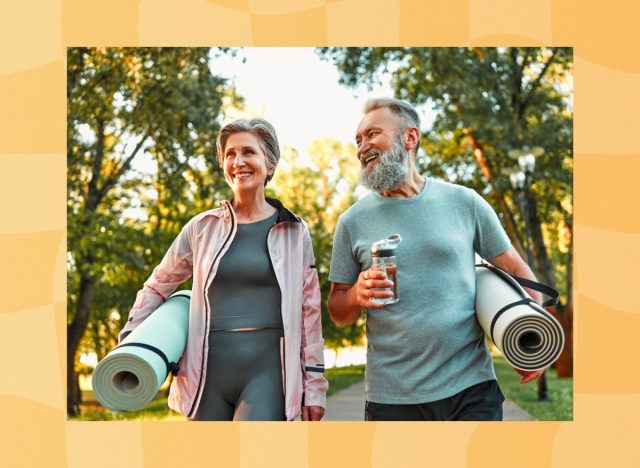
“One perspective that my clients have found helpful is to think about this: at any given moment you are either getting weaker or stronger,” says Matt Hsu, a corrective exercise specialist, pain expert, and movement coach for Boostcamp. “If you choose to do nothing and sit on the couch you will get weaker. If you choose to move and exercise you will get stronger (assuming you are doing your exercises well). As we age the rate at which we get weaker accelerates. So it becomes more and more important to choose to get stronger on a regular basis.”
Repeat After Us: Always Be Moving
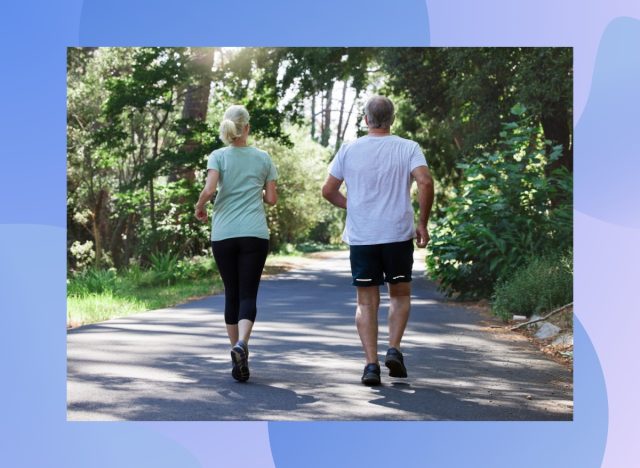
It’s simply a fact that “exercise” isn’t merely confined to the things you do in gyms or activities you do while wearing wick-away compression clothing. All movement is good movement.
“One major trick for keeping in shape after 60 is to keep an overall high activity level,” says Robert Herbst, a 63 year-old personal trainer and 19-time world champion powerlifter. “If in your 40s and 50s you were busy running around taking kids places, shopping, doing household chores, playing sports on weekends, and living a normal life, after 60 just doing 30 minutes of water aerobics twice a week will not keep you in shape.”
While the kids may be gone and you have downsized, he says, “you need to develop active hobbies and a busy routine to keep your baseline shape elevated.”
That means walking, gardening, playing golf, mowing the lawn, dancing, and playing with your children or grandchildren. If you’re interested in some great walking tips, don’t miss The 4 Walking Workouts That Will Help You Get Lean, Says Top Trainer.
Push & Pull, Sit & Stand, Bend & Lift
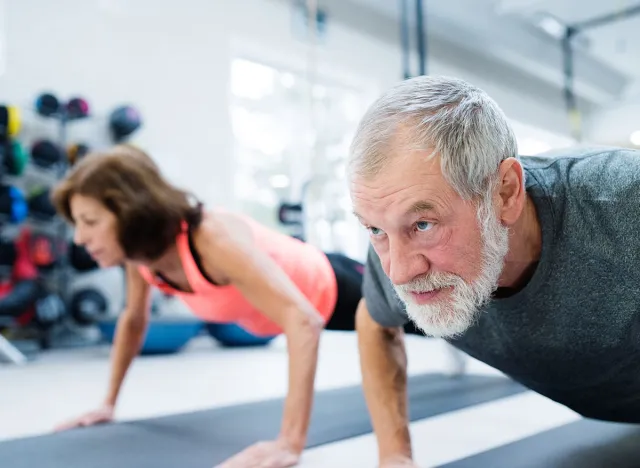
When you’re strength training, the leading experts would advise you to do less of the exercises that don’t serve any functional purpose (such as bicep curls or crunches). “Exercise routines should be built around functional movements—the physical activities that you normally do in your daily life,” says Glassman. “It doesn’t have to be complicated. Functional movements are pushing and pulling, sitting and standing, bending and lifting.”
That means doing more squats, pushups, pullups, deadlifts, and planks and other functional core exercises. These are the moves that experts say will make you a more active and healthy person. For more of the core exercises you should do, don’t miss The Best Abs Exercises You Can Possibly Do After 60, Says Trainer.
